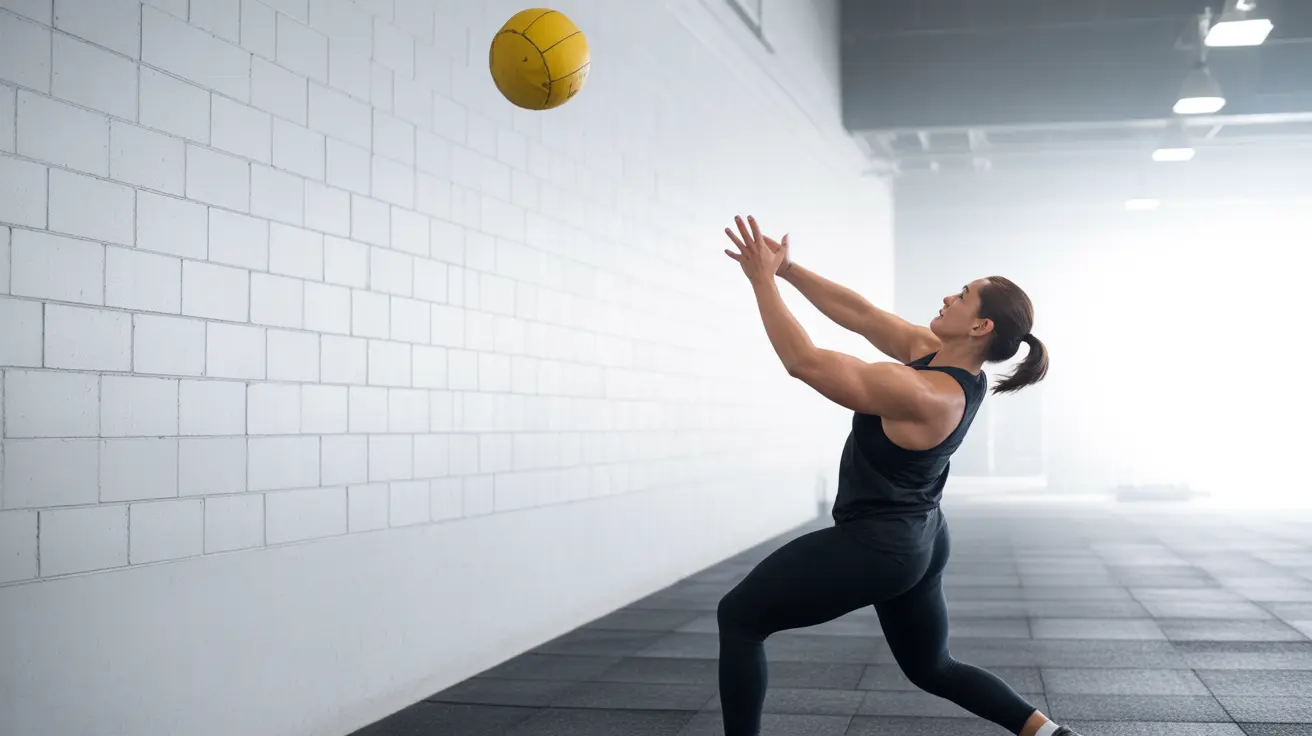Wall ball workouts have become increasingly popular in functional fitness routines, and for good reason. This dynamic exercise combines strength training, cardiovascular conditioning, and explosive power into one efficient movement. Whether you're new to fitness or an experienced athlete, understanding how to properly execute wall balls can significantly enhance your workout routine.
In this comprehensive guide, we'll explore everything you need to know about wall ball workouts, from proper form to muscle engagement, helping you maximize your results while minimizing the risk of injury.
Understanding Wall Ball Benefits and Muscle Engagement
Wall ball workouts are truly a full-body exercise that targets multiple muscle groups simultaneously. The primary muscles engaged include:
- Quadriceps
- Glutes
- Hamstrings
- Core muscles
- Shoulders
- Triceps
- Upper back muscles
This compound movement not only builds strength but also improves coordination, power output, and cardiovascular endurance. The explosive nature of the exercise helps develop functional fitness that translates to both athletic performance and daily activities.
Proper Wall Ball Technique
Mastering proper form is crucial for both safety and effectiveness. Here's a detailed breakdown of the movement:
Starting Position
Begin by standing 2-3 feet away from a wall, holding a medicine ball at chest height. Position your feet slightly wider than shoulder-width apart, with toes pointed slightly outward.
The Squat Phase
Lower into a squat position while keeping the medicine ball at chest height. Maintain a neutral spine and ensure your knees track in line with your toes. Your weight should be distributed primarily through your heels.
The Explosive Movement
Drive through your heels and explosively stand up, simultaneously throwing the ball upward toward a target on the wall. The target height typically ranges from 9 to 10 feet, depending on your fitness level and goals.
The Catch and Reset
As the ball rebounds, catch it while simultaneously lowering back into the squat position. This fluid movement creates a continuous cycle that maintains intensity throughout the workout.
Selecting the Right Equipment and Setup
Choosing appropriate equipment is essential for a safe and effective wall ball workout:
- Medicine ball weight: 14-20 lbs for men, 8-14 lbs for women (beginners should start lighter)
- Wall height: Minimum 10 feet clearance
- Floor space: At least 6 feet away from the wall
- Non-slip surface
- Sturdy wall that can withstand repeated impact
Programming Wall Balls Into Your Workout
Wall balls can be incorporated into your fitness routine in several ways:
- As part of a warm-up (2-3 sets of 10-15 reps)
- Within a circuit training session
- As a standalone conditioning workout
- In combination with other functional movements
- For AMRAP (As Many Rounds As Possible) challenges
Frequently Asked Questions
What muscles does a wall ball workout target and how does it benefit overall fitness?
Wall ball workouts target the quadriceps, glutes, hamstrings, core, shoulders, triceps, and upper back muscles. This comprehensive engagement promotes full-body strength, improved coordination, better cardiovascular fitness, and enhanced power output.
How do you properly perform a wall ball exercise to avoid injury and maximize results?
Start with feet shoulder-width apart, squat while holding the ball at chest height, explosively stand while throwing the ball to a target on the wall, catch the rebounding ball while returning to squat position. Maintain proper form throughout, keeping your core engaged and spine neutral.
What are common mistakes to avoid when doing wall ball workouts?
Common mistakes include using too heavy a ball, not squatting deep enough, throwing the ball too far forward instead of up, failing to maintain core engagement, and not catching the ball softly. Focus on controlled movements and proper form rather than speed.
How can beginners choose the right medicine ball weight and set up for wall balls?
Beginners should start with a lighter medicine ball (8-14 lbs for women, 14-20 lbs for men) and focus on form. Ensure adequate wall height (10 feet minimum) and space (6 feet from wall). Practice the movement pattern with a lighter ball before progressing to heavier weights.
What are good alternative exercises to wall balls for building strength and explosiveness?
Alternative exercises include thrusters, medicine ball slams, box jumps, kettlebell swings, and squat jumps. These movements similarly develop power, strength, and conditioning while targeting multiple muscle groups.




